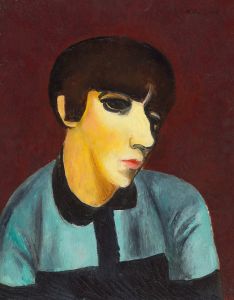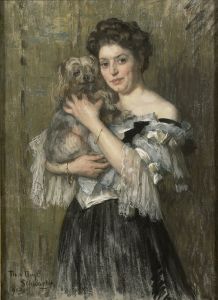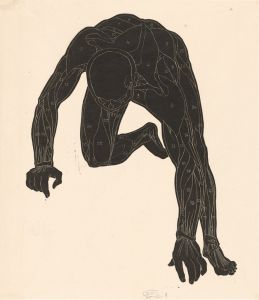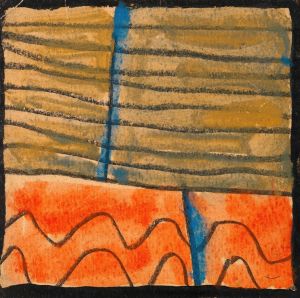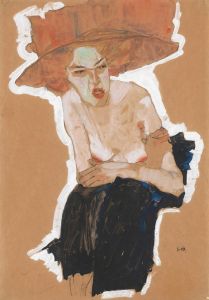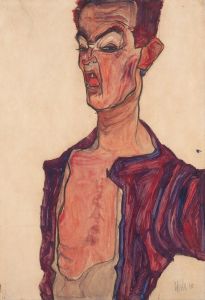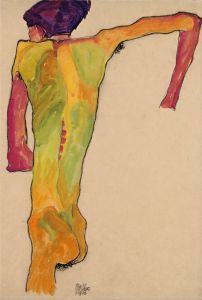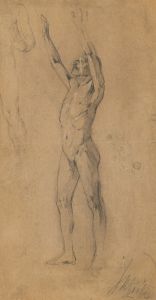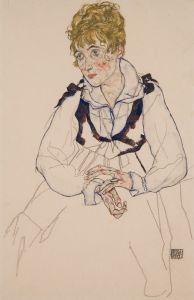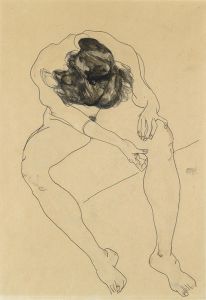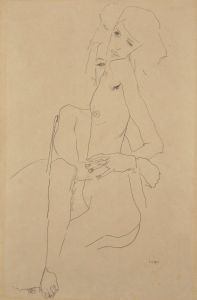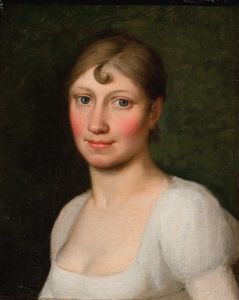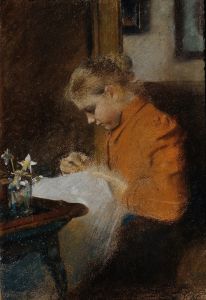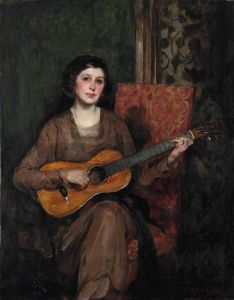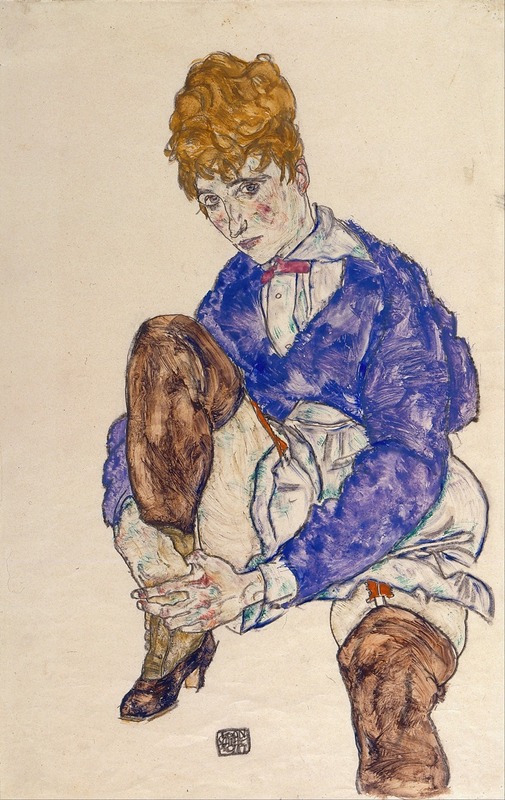
Portrait of the Artist’s Wife Seated, Holding Her Right Leg
A hand-painted replica of Egon Schiele’s masterpiece Portrait of the Artist’s Wife Seated, Holding Her Right Leg, meticulously crafted by professional artists to capture the true essence of the original. Each piece is created with museum-quality canvas and rare mineral pigments, carefully painted by experienced artists with delicate brushstrokes and rich, layered colors to perfectly recreate the texture of the original artwork. Unlike machine-printed reproductions, this hand-painted version brings the painting to life, infused with the artist’s emotions and skill in every stroke. Whether for personal collection or home decoration, it instantly elevates the artistic atmosphere of any space.
"Portrait of the Artist’s Wife Seated, Holding Her Right Leg" is a painting by the Austrian Expressionist artist Egon Schiele. Created in 1917, this work is a notable example of Schiele's distinctive style, characterized by its raw emotional intensity and unique approach to the human form.
Egon Schiele was born on June 12, 1890, in Tulln, Austria, and became one of the leading figures of early 20th-century art. He was a protégé of Gustav Klimt and was deeply influenced by the Viennese Secession movement. Schiele's work often explored themes of sexuality, death, and the human condition, and he is known for his bold, often controversial, depictions of the human body.
The subject of this painting is Edith Harms Schiele, Egon Schiele's wife. Edith was born on September 22, 1893, and married Schiele on June 17, 1915. She frequently served as a model for her husband’s works, and their relationship was a significant influence on his art. In "Portrait of the Artist’s Wife Seated, Holding Her Right Leg," Edith is depicted in a seated position, holding her right leg with both hands. The composition is intimate and personal, capturing a moment of quiet introspection.
The painting is executed in Schiele's characteristic style, with bold lines and a limited color palette. Schiele's use of line is particularly striking; he employs sharp, angular contours to define Edith's form, creating a sense of tension and dynamism. The background is minimal, drawing the viewer's attention to the figure of Edith herself. Her pose is somewhat unconventional, with her body twisted and her leg held close to her chest, which adds to the sense of psychological depth and complexity.
Schiele's treatment of the human figure often involved a degree of distortion, and this painting is no exception. Edith's elongated limbs and exaggerated posture are typical of Schiele's approach, which sought to convey the inner emotional state of his subjects rather than a realistic representation. This expressionistic technique allows the viewer to engage with the painting on a deeper, more emotional level.
"Portrait of the Artist’s Wife Seated, Holding Her Right Leg" is also notable for its exploration of the relationship between artist and model. The intimacy of the pose and the directness of Edith's gaze suggest a deep connection between the subject and the artist. This personal dimension is a recurring theme in Schiele's portraits, many of which feature his close friends and family members.
Egon Schiele's career was tragically short; he died on October 31, 1918, at the age of 28, a victim of the Spanish flu pandemic. Despite his brief life, Schiele left behind a substantial body of work that continues to be celebrated for its emotional power and innovative approach to portraiture.
"Portrait of the Artist’s Wife Seated, Holding Her Right Leg" remains an important piece within Schiele's oeuvre, exemplifying his unique artistic vision and his ability to capture the complexities of human emotion. The painting is held in high regard by art historians and continues to be studied and admired for its contribution to early 20th-century art.





